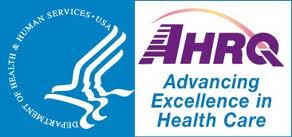 Ideas from the AHRQ Evidence-based Practice Centers
Ideas from the AHRQ Evidence-based Practice Centers
By Stephanie Chang, MD, MPH, Director of AHRQ‘s Evidence-Based Practice Center Program and
Amanda Borsky, Dr.PH, MPP, Dissemination and Implementation Advisor for the EPC Program
Twitter: @AHRQNews
This is a time of rapid change for health systems. New technologies, infrastructure, incentives and understanding increase the ways that health systems can improve patient care by tracking and using their own internal data.
While using internal data is one part of being a learning health system, it misses the potential knowledge that comes from the wealth of published research from other health systems that could further improve patient care. Integrating and using both local health system data alongside research findings from other clinical environments will allow health systems to provide better care today because of the lessons learned providing care yesterday—thus becoming “learning” health systems.
Still, longstanding challenges complicate these efforts.
The overwhelming number of publications daily necessitate significant effort and resources to keep abreast of the relevant literature for any particular question. As estimated by one count of publications in MEDLINE, in 2017 nearly 35 systematic reviews, 59 randomized or controlled clinical trials, and 166 observational studies were published every day.
For more than two decades, AHRQ has been at the forefront of efforts to synthesize evidence in ways that address questions that healthcare decision makers are asking. Through its 12 Evidence-based Practice (EPC) Centers, the Agency has funded more than 500 evidence reviews addressing a wide range of common, costly challenges in delivering the best care for patients.
The EPC reports’ contributions to improving the care of patients has been invaluable. Clinical professional organizations, federal agencies, and other health organizations have used EPC reports to inform clinical practice guidelines, coverage decisions, program planning, educational materials and tools, and research agendas.
Health systems are another obvious partner and potential user of EPC systematic evidence reviews. For the past several years, the EPC Program has been working to better understand how to increase the utility of EPC reviews for learning health systems. In 2018, the AHRQ EPC program began to work with learning health systems to develop and test translational products based on existing EPC evidence reviews.
EPC researchers worked with local health systems to develop and pilot translational products with the goal of improving the ability of the health system to access and understand the information from the EPC evidence review. The charge was general and allowed EPCs freedom to explore different approaches, which fell into a range of products and learnings:
- Dissemination products: Some EPCs elected to repackage portions of existing EPC reviews or key messages into a shorter or more visual format or through cyber seminars. The three products in this category provided high-level summaries of the EPC reviews and aimed to address department- or system-level decisions.
- Interactive Data Visualization products:Some EPCs explored the use of software technology or other methods to enable an end user to interact with findings from reports in a meaningful way. Graphical presentation of data and findings, along with the interactive feature, were key aspects to these products.
- Implementation products: EPCs created tools that moved evidence right into clinical workflow, including decision aids, clinical pathways, and an implementation package to integrate information directly into an electronic medical record.
Findings from a selection of these projects will be published in a series published in the Joint Commission on Quality and Patient Safety. The first article, an introduction to the series, was published in the August 1, 2019, issue, and in a report on the AHRQ website. Four subsequent articles will be published in the journal through December.
In the introductory article, we and our coauthors provide a summary overview of the projects. We point out that the translational products served different purposes by providing different subsets of the information from the systematic reviews to different audiences within the healthcare system. Presenting information in diverse ways may be very helpful for the uptake of evidence within a large, complicated health system.
We continue efforts to engage with health systems through engaging a learning health systems panel and through other EPC projects. The lessons learned from these projects continue to inform how the EPC program can better display and convey information in a way that end users and health systems can understand and use. We hope that these experiences are helpful to other efforts to improve bridge the evidence-to-practice gap.
This article was originally published on AHRQ Views Blog and is republished here with permission.
